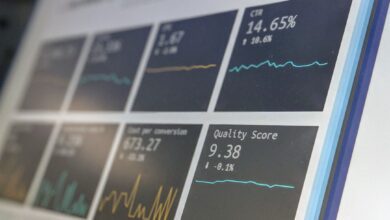Mastering Day Trading: Effective Strategies for Profiting from Daily Price Movements in Stock and Forex Markets

Day trading has emerged as a dynamic and exciting avenue for traders looking to capitalize on daily price movements across various markets. Whether you are interested in stock trading, forex trading, or even options trading, the principles of day trading can unlock the potential for significant profits. In this fast-paced environment, understanding effective trading strategies is crucial. This article will delve into essential day trading techniques and how they can be applied in stock, forex, and commodities trading. Additionally, we will explore the critical aspect of risk management to protect your capital while navigating the complexities of high-frequency trading and leverage trading. By incorporating technical and fundamental analysis into your trading strategy, you can enhance your decision-making process and improve your performance. Join us as we uncover the key components of successful day trading, from trading psychology to the use of online trading platforms, ensuring you are well-equipped to thrive in this competitive landscape.
- 1. Understanding Day Trading: Key Strategies and Techniques for Success in Stock and Forex Markets
- 2. Risk Management in Day Trading: Essential Practices for Protecting Your Capital
- 3. The Role of Technical and Fundamental Analysis in Developing Effective Trading Strategies
1. Understanding Day Trading: Key Strategies and Techniques for Success in Stock and Forex Markets
Day trading is a dynamic trading strategy that involves buying and selling financial instruments within the same trading day. This approach is commonly used in various markets, including stock trading, forex trading, and even crypto trading. Understanding the key strategies and techniques that underpin successful day trading is essential for anyone looking to profit from daily price movements.
One of the primary strategies in day trading is scalping, which focuses on making small profits from numerous trades throughout the day. Scalpers often utilize high-frequency trading techniques and algorithmic trading systems to capitalize on minute fluctuations in the market. This method requires a deep understanding of technical analysis, as traders must quickly interpret price charts and indicators to make informed decisions.
In contrast, swing trading may be more suitable for those who prefer a slightly longer time frame. While still considered short-term trading, swing trading involves holding positions for several days to capture potential market swings. Traders engaging in swing trading often blend both technical and fundamental analysis to gauge market sentiment and identify potential entry and exit points.
Risk management is a cornerstone of successful day trading. Traders should establish clear risk parameters, such as setting stop-loss orders to limit potential losses. Leverage trading can amplify both profits and losses, making it vital for day traders to understand their risk tolerance and employ disciplined margin trading practices.
Moreover, trading psychology plays a crucial role in day trading success. Emotions can lead to impulsive decisions, which is why maintaining a calm and focused mindset is essential. Developing a structured trading plan that incorporates various trading strategies, such as derivatives trading, options trading, and even binary options, can help traders stay disciplined.
Market analysis is another critical component of day trading. Traders must continuously monitor economic indicators, news events, and market trends that can influence price movements. This includes understanding energy trading dynamics, commodities trading, and index trading for a comprehensive view of the market landscape.
In the age of technology, online trading platforms have revolutionized the way traders execute their strategies. Many platforms now offer features for copy trading and social trading, allowing inexperienced traders to follow and replicate the strategies of successful traders.
Ultimately, whether engaging in CFD trading, ETF trading, or arbitrage trading, a solid grasp of trading strategies and market analysis tools is essential for anyone looking to thrive in the fast-paced world of day trading. By combining technical proficiency with sound risk management and psychological discipline, traders can enhance their chances of success in both stock and forex markets.
2. Risk Management in Day Trading: Essential Practices for Protecting Your Capital
Risk management is a critical component of day trading, as it helps protect your capital from significant losses that can occur due to the inherent volatility of the markets. Whether you are engaged in stock trading, forex trading, options trading, or any other form of trading, implementing effective risk management practices is essential to long-term success.
One of the fundamental practices in risk management is the establishment of a clear risk-reward ratio for each trade. This involves determining how much you are willing to risk on a trade compared to the potential profit. A common guideline is to aim for a risk-reward ratio of at least 1:2, meaning that for every dollar you risk, you should aim to make at least two dollars. This strategy is vital in ensuring that even if you incur some losses, your profitable trades can still lead to an overall positive outcome.
Another key practice is the use of stop-loss orders. A stop-loss order is a predefined price level at which a trader will exit a losing position to limit potential losses. This is particularly important in fast-paced trading environments like day trading, where price movements can happen rapidly. By setting stop-loss orders, traders can automate their exit strategies and reduce emotional decision-making that may lead to further losses.
Position sizing is also a crucial aspect of risk management. This involves determining the appropriate amount of capital to allocate to each trade based on your overall portfolio size and risk tolerance. A common rule of thumb is to risk no more than 1-2% of your trading capital on a single trade. This conservative approach allows traders to withstand a series of losses without facing substantial financial harm.
Additionally, understanding leverage and margin trading is vital in risk management. Leverage can amplify both gains and losses, making it a double-edged sword. While it allows traders to control larger positions with a smaller amount of capital, it also increases the risk of significant losses if trades do not go as planned. Therefore, it is essential to use leverage judiciously and to ensure that you fully understand the risks involved.
Finally, a strong grasp of trading psychology is necessary to manage risk effectively. Emotional trading can lead to poor decision-making and increased risk. By developing a disciplined trading strategy and sticking to it, traders can minimize the impact of fear and greed on their trading performance. Incorporating technical analysis and fundamental analysis into your trading strategy can also provide valuable insights into market conditions, helping you make more informed decisions.
In summary, effective risk management in day trading involves establishing a solid risk-reward ratio, utilizing stop-loss orders, practicing proper position sizing, understanding leverage, and cultivating a disciplined trading psychology. By incorporating these practices into your trading strategies, whether you're engaged in high-frequency trading, scalping, or any other trading approach, you can better protect your capital and enhance your chances of long-term success in the dynamic world of trading.
3. The Role of Technical and Fundamental Analysis in Developing Effective Trading Strategies
In the world of day trading, developing effective trading strategies hinges on the integration of both technical and fundamental analysis. Each approach offers distinct insights that can significantly enhance a trader's ability to profit from daily price movements across various markets, including stock trading, forex trading, and crypto trading.
Technical analysis focuses on historical price data and market trends to predict future movements. Traders use charts, indicators, and patterns to identify entry and exit points, making it essential for strategies like scalping and high-frequency trading. By analyzing price action and volume, traders can spot potential reversals or continuations, allowing them to capitalize on short-term fluctuations. This method is vital for day traders who thrive on rapid trades and need to make quick decisions based on market behavior.
On the other hand, fundamental analysis examines the underlying factors that influence asset prices, such as economic indicators, earnings reports, and geopolitical events. Understanding these elements is crucial for day traders in markets like commodities trading and index trading, where external factors can lead to sudden price changes. For instance, a report on unemployment rates can drive stock prices, while changes in energy policies might affect energy trading. By staying informed about these factors, traders can anticipate market movements and adjust their strategies accordingly.
Combining technical and fundamental analysis allows traders to create a well-rounded approach to market analysis. For example, while a technical indicator might suggest an upward trend in a stock, a fundamental analysis of quarterly earnings might reveal that the growth is unsustainable. This dual approach not only aids in refining trading strategies but also contributes to risk management, as traders can make more informed decisions and avoid potential losses associated with relying on one type of analysis.
Moreover, trading psychology plays a significant role in how traders interpret technical and fundamental data. Emotional discipline is essential when executing trades based on analysis. Traders must remain focused and avoid impulsive decisions driven by fear or greed, which can lead to poor outcomes in day trading.
In conclusion, the integration of technical and fundamental analysis is crucial for developing effective trading strategies in various markets. By leveraging these analytical approaches, day traders can navigate the complexities of online trading platforms, optimize their strategies for different trading styles, and ultimately enhance their chances of profitability in the fast-paced trading environment.
In conclusion, day trading offers a dynamic approach to capitalizing on daily price movements in various markets, including stock trading, forex trading, and commodities trading. By understanding key strategies such as scalping, high-frequency trading, and algorithmic trading, traders can effectively navigate the complexities of the financial landscape. However, the importance of risk management cannot be overstated; implementing essential practices to protect your capital is crucial for long-term success.
Moreover, a solid grasp of both technical and fundamental analysis is vital in developing effective trading strategies that align with your trading psychology and risk tolerance. Whether you engage in options trading, futures trading, or even explore innovative methods like copy trading and social trading, the ability to analyze market trends and make informed decisions will set you apart from the competition.
As you venture into the world of day trading, remember to stay updated on market movements and continuously refine your trading strategies. Leveraging online trading platforms can provide access to valuable resources and tools, enabling you to execute trades with confidence. Ultimately, with a disciplined approach and a commitment to learning, day trading can be a rewarding endeavor that opens doors to opportunities in various trading avenues, including crypto trading, index trading, and more. Embrace the journey, and let your pursuit of profitable trading lead the way.
References:
– Author, A. (Year). Title of the source. URL
– Author, B. (Year). Title of the source. URL
– Author, C. (Year). Title of the source. URL





